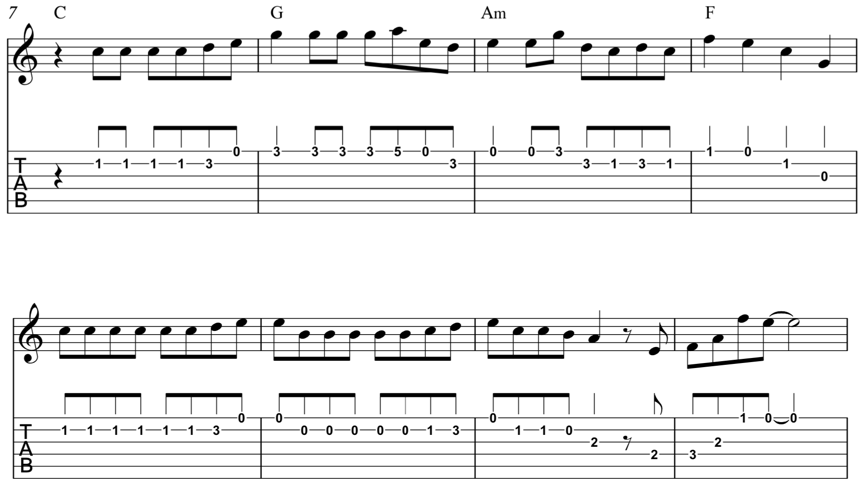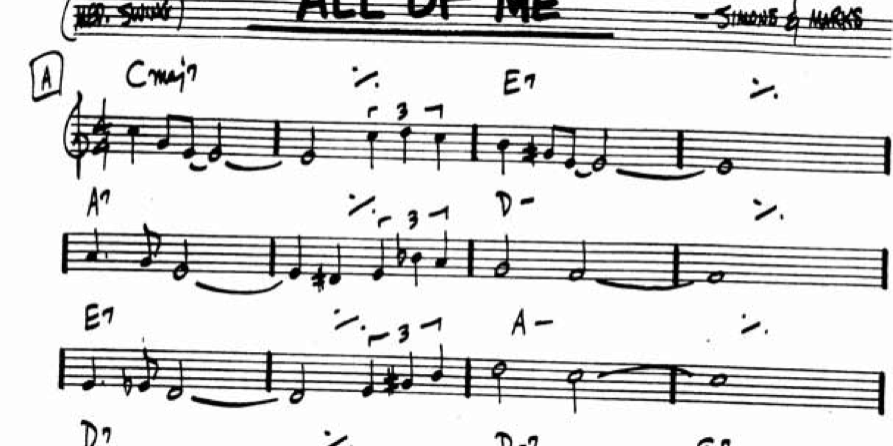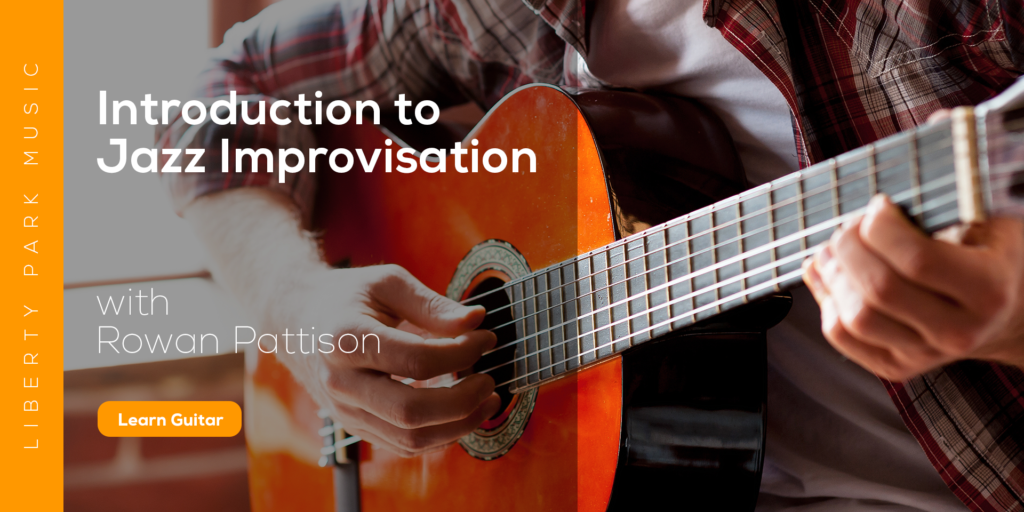
So far we have learned how each note of the C major scale feels and sounds when it is played over each chord in the progression. As you become more comfortable with these notes, you will be able to learn arrangements much more efficiently, as all the shapes will feel somewhat familiar.
In “I’m Yours,” an incredibly popular song from Jason Mraz’s 2008 album We Sing, We Dance, We Steal Things, the chord structure is our simple I V ii IV. The original is a half step lower, in the key of B major. It’s always best to start any arrangement by revising the chords involved and making sure we are confident in playing them. We can do this by playing through the progression in the key of C major, which makes the chords C, G, Am and F. Play through these chords and practice connecting the notes of the scale like in the previous articles.
In the other pieces in this course, we have learned specific arrangements and I have been relatively strict on each voicing and rhythm for the arrangement. For this last song, we will approach it a little differently. What we will do here is to study the melody, learn how the melody fits over the bass movement, and explore ways to fill in the gaps with the chords. This will leave the arrangement ideas up to you based off of what we have learned so far.
1. Melody
The melody is arpeggio-based, meaning that the notes of the melody often follow the notes of each chord in the harmony. Carefully learn the melody and take note of the notes from each chord. Also, the melody go slightly higher than our first position, so this is a good exercise on stretching up on the high E string.
The chorus follows the chords strictly. In the first bar we have a straight C major arpeggio, then a G major arpeggio, and two notes from the Am chord in bar 3. The only bar that strays from the arpeggios is bar 4, which has a relatively simple line that runs down the scale. Practice the melody as written; the rhythms have been simplified slightly for ease of reading, and it’s up to you to interpret them however you would like.

The Verse is slightly more scale-based than the chorus, and there are two different verses in this song:

2. Bassline and Melody
A great way to learn the structure and harmonic movement of a song is to learn the melody with the baseline, even if it is simply holding the root notes of the chords.This method allows our ears to hear how the melody fits over the chords. Playing just bass/melody can also be a perfectly sound arrangement on its own. Start by playing through the bass notes for each bar and then the melody on its own. Finally, play the melody whilst holding the root note of the chord. In the first bar, we will be holding a C on the third fret of the A string. Do the same with each bar using the different bass notes. Once you feel comfortable with this, practice connecting each bar in time.

Now that we understand how the melody fits over the bass movement, let’s look at some ways we can implicate the chords.
3. Strumming
To incorporate strumming, use the same concept we used to practice the bass note, except this time strum the whole chord and play the melody whilst keeping the chord ringing. Once you are comfortable with this, you can add multiple strumming patterns underneath the melody. Practice with both a pick and your fingers to expand your textural options. Below are some examples over the first bar.
4. Fingerpicking
When we fingerpick our song, we can pick specific notes of the chords that will compliment the melody. Start by choosing one note from each chord and fitting it around the bass note and melody. For example:

With this idea we can add any combination of notes as long as the melody is retained. Experiment with different notes from each chord, but remember to focus on the melody.
Learn with LPM
If you are looking to feel comfortable with playing basic major and minor chords, power chords, and apply different strumming techniques to your practices with Ze, check out his course called Rhythm Guitar
5. Combining techniques
An important part of a solo arrangement is making the performance interesting. One way we can achieve this goal is by exploring our textural options: using our fingers, a pick, strum, or various combinations. Practice blending what we've learned in this lesson and throughout the course to make your arrangement engaging. We can use this technique to build a song dynamically or express different emotions.
Putting this Arrangement to Practice
We've learned some great arrangements throughout this course, and now we have developed the skills to produce our own arrangements of songs. You can now put together your own repertoire of solo guitar material and continue to refine it.
Solo guitar is a popular form of music for weddings, events, and general background music, so there are lots of opportunities to perform your arrangements.
To progress from here, you can start looking at different keys and moving up the neck of the guitar.
More About the Teacher
Rowan Pattison is an Australian jazz and contemporary guitarist. His resumé boasts artists such as American singer Bobby Arvon (Happy Days), Broadway star Michelle Murlin, American Idol finalist Lou Gazzara, Marcus Terrel from America’s Got Talent, Vegas Trumpet prodigy Greg Bohnam and American Comedian James Stevens III, who is featured regularly on The Tonight Show and Comedy Central. Now based in Melbourne, Rowan has just lead his own trio concert Impressionism of Bill Evans on a tour of Europe playing concerts in Kyiv, Lviv, Krakow and Paris. Rowan's guitar courses with Liberty Park Music include the Introduction to Jazz Improvisation and Introduction to Solo Guitar.






